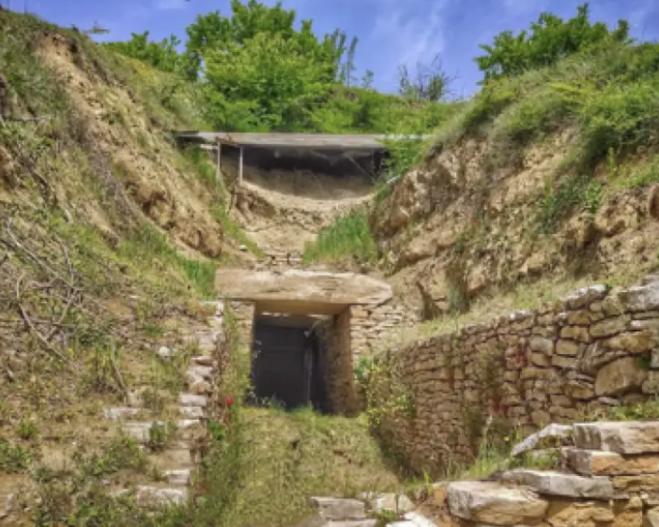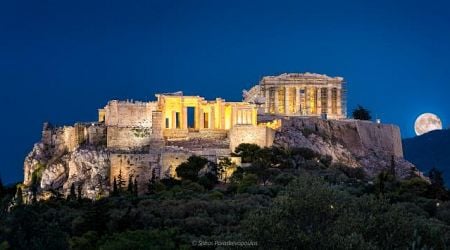The Ministry of Culture is proceeding with the protection and enhancement of the tholos tomb at Georgiko-Xinoneri, one of the best-preserved Mycenaean burial monuments in Thessaly, following the favorable opinion of the Central Archaeological Council on architectural studies, landscaping, electromechanical installations, and fire protection plans.
A photorealistic representation of the new entrance being developed
The Mycenaean tomb of Georgiko-Xinoneri is located at “Koufia Rahi,” about five kilometers from Karditsa, and dates back to 1400 BC. It was discovered in 1917, with intensive excavations conducted from 1997 to 1999. During the gradual removal of stones, numerous small items, including clay and metal objects, were found, leading to the conclusion that the space had been used in later times as a “Sanctuary of the Ancestors.”
“Protection and enhancement works include interventions to stabilize the slopes, lighting the monument, and paths for visitors. With the planned interventions, the monument will be protected, showcased, and made accessible to all groups of visitors. They will be able to visit the interior of the monument and explore the surrounding area, which includes informational materials. For those with mobility challenges, a 3D virtual tour will be available,” notes the Minister of Culture, Lina Mendoni.
The planned interventions focus on two main aspects: visitor paths and the design of auxiliary buildings (guardhouse, storage, WC) to service the public and staff. The main route begins from the parking area, passing through the main entrance near the guardhouse, and continues towards the tomb entrance, with landscaped paths featuring platforms that occasionally include rest areas and informational sign placements.
To allow accessibility for people with disabilities to the interior of the tomb, a modern construction will overcome the ancient wall blocking the path. The positioning of the auxiliary buildings considers the monument’s entrance, the existing parking area, visitor flow, and accessibility for people with disabilities. A ramp ensures access to the guardhouse and a separate WC, designed according to specifications.
The fire protection study for the archaeological site includes the installation of a permanent water-sprinkler fire network around the site, supplied by an underground water tank through a pumping fire system. The electromechanical installations for the auxiliary building include climate control systems, active fire protection, electrical installations, lightning protection, water supply, and drainage systems.



































